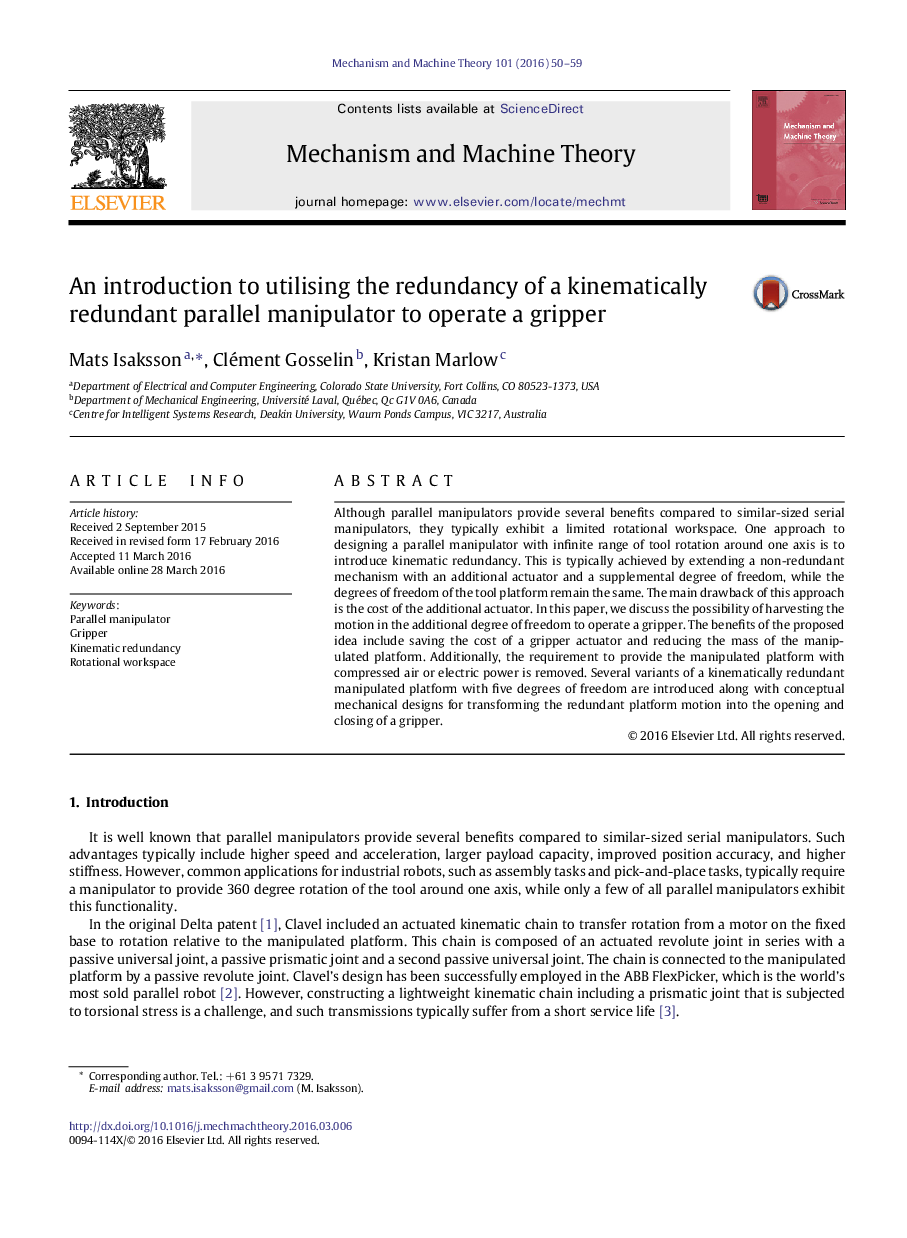| Article ID | Journal | Published Year | Pages | File Type |
|---|---|---|---|---|
| 804515 | Mechanism and Machine Theory | 2016 | 10 Pages |
•Parallel manipulators typically suffer from a limited rotational workspace.•Kinematic redundancy can overcome this issue at the cost of an additional actuator.•We propose to harvest the redundant platform motion to operate a gripper.•Several variants of a kinematically redundant manipulated platform are introduced.•Designs for transforming the redundant motion into gripper actuation are proposed.
Although parallel manipulators provide several benefits compared to similar-sized serial manipulators, they typically exhibit a limited rotational workspace. One approach to designing a parallel manipulator with infinite range of tool rotation around one axis is to introduce kinematic redundancy. This is typically achieved by extending a non-redundant mechanism with an additional actuator and a supplemental degree of freedom, while the degrees of freedom of the tool platform remain the same. The main drawback of this approach is the cost of the additional actuator. In this paper, we discuss the possibility of harvesting the motion in the additional degree of freedom to operate a gripper. The benefits of the proposed idea include saving the cost of a gripper actuator and reducing the mass of the manipulated platform. Additionally, the requirement to provide the manipulated platform with compressed air or electric power is removed. Several variants of a kinematically redundant manipulated platform with five degrees of freedom are introduced along with conceptual mechanical designs for transforming the redundant platform motion into the opening and closing of a gripper.
